A visual cue that a garden is alive is always pleasant and satisfying. While evergreens are reliable garden standbys, it's the dynamic deciduous varieties that can really stimulate the senses and let us know a new season is coming. Roger's California Grape is one such plant, and its distinguishing features come alive in fall.
It was discovered by horticulturist Roger Raiche growing naturally alongside a road in Sonoma, California; Raiche was struck by the brilliant shades of red displayed by the vine's seasonal foliage. After years of speculation and research, it was determined that what was thought to be a native California grape was, in fact, a very unique grape hybrid (a cross between the native
Vitis californica grape and a European
Vitis vinifera). Distinct, ornamental and unfussy,
Vitis 'Roger's Red' is a lush deciduous grapevine that provides a strong garden frame and a spectacular garden accent, revealing something new every season.
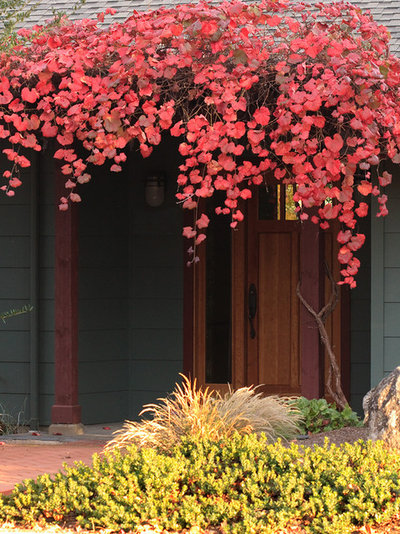
John J. Kehoe Photography
Botanical name: Vitis ‘Roger’s Red’
Common name: Roger’s California Grape
USDA zones: 7 to 10; frost hardy (find your zone)
Water requirement: Low
Sun requirement: Full sun to partial shade
Mature size: Spreads up to 30 feet; vigorous grower
Benefits and tolerances: Drought tolerant; provides shelter to wildlife; fruit and flowers attract bees, birds and other wildlife
Seasonal interest: Leaves turn ablaze in fall
When to plant: Early spring
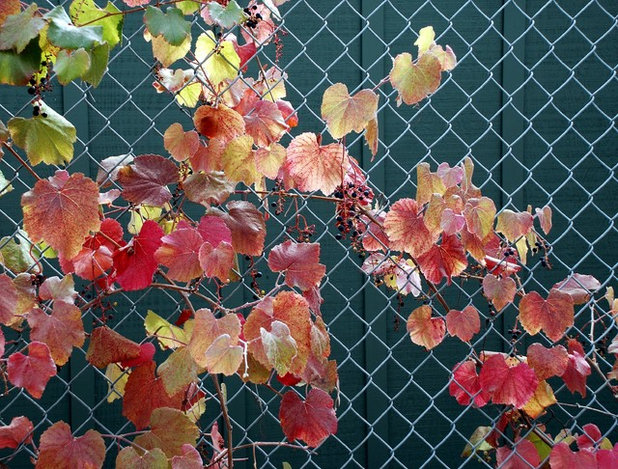
Pete Veilleux, East Bay Wilds
Distinguishing traits. 'Roger’s Red' is a distinct and attractive grape hybrid grown particularly for its ornamental purposes — namely, its vivid red fall foliage.
Large, slightly lobed leaves emerge in shades of gray and green in spring. They hold their color until fall, when a brilliant red — reminiscent of Japanese maple — transforms the vine for the season.
Around the same time the leaves are changing, small, dark purple grapes will be seen dangling off the vines. While 'Roger's Red' is not typically grown for its fruit, it is pretty exciting to see grapes growing in your own yard. The fruit can be used in juices and jams, but more commonly serves as a delicious snack for passing birds and other garden wildlife, who eat the grapes directly off the vines. Attract wildlife to your garden while eliminating the source of garden messes later — what a symbiotic relationship.
Remaining leaves and grapes will drop after fall, leaving the vine barren until spring. Feel free to trim back the vine at this time, as it is a vigorous grower and requires some maintenance to keep it under control.
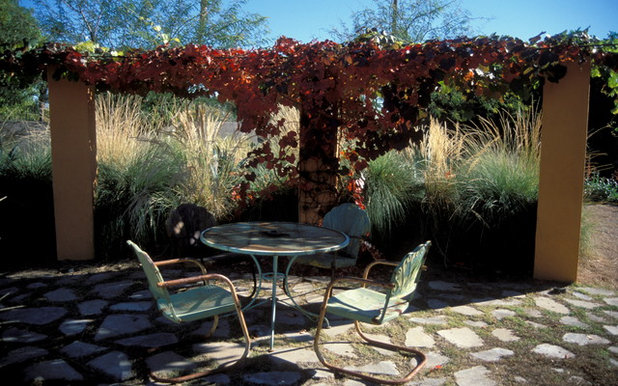
Mountain States Wholesale Nursery
How to use it. This is a beautifully wild and colorful vine, so be sure to plant it where you can enjoy its seasonal progressions. Lush foliage shades and protects sunny patios in spring and summer. Fall welcomes brilliant color and wildlife, while winter reveals the architecture of the vine and allows the sun to penetrate and warm the soil.
All grapevines climb by tendrils, so 'Roger's Red' will require a trellis or another support in order to climb. Alternatively, you can plant the grape as a ground cover. It will actively spread, so be sure you have plenty of room if you choose to do so.
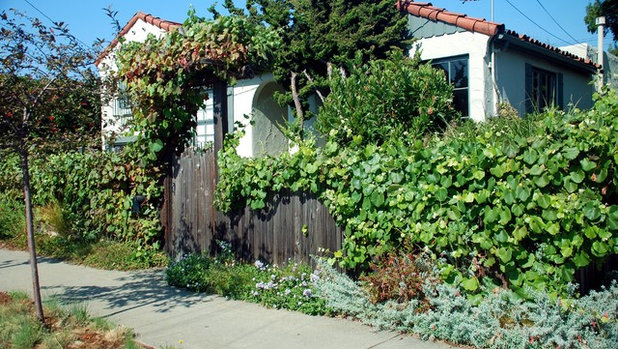
Pete Veilleux, East Bay Wilds
Planting notes. 'Roger's Red' can grow several feet per year, so space is an important consideration. The vine is very trainable when it's young and responds well to winter cutbacks. For best results, plant it near a support and avoid transplanting it.
This vine grows best in well-drained soil. Establish it with regular water after planting and continue with deep, infrequent watering. It's tolerant of sandy and clay soils, and grows best in full sun or partial shade.
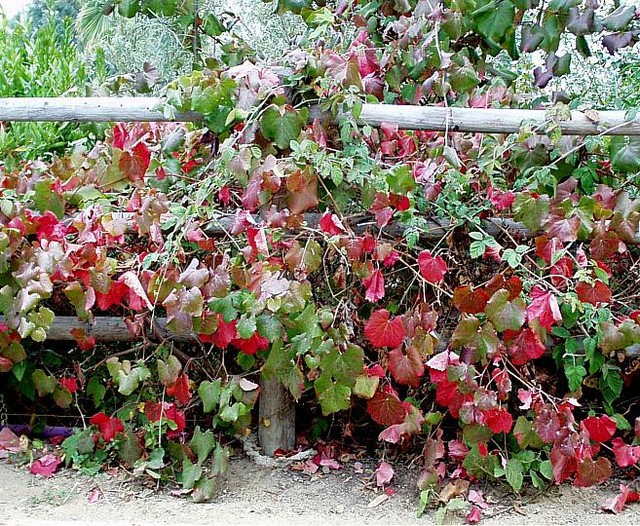
San Marcos Growers
'Roger's Red' is a wonderful garden addition overall because it accomplishes so many garden tasks at once: providing food and shelter for wildlife, displaying colorful seasonal interest and enhancing or masking garden structures. If you are meticulous with training and maintenance, you can count on a picturesque and beautifully untamed garden vine for your space.





